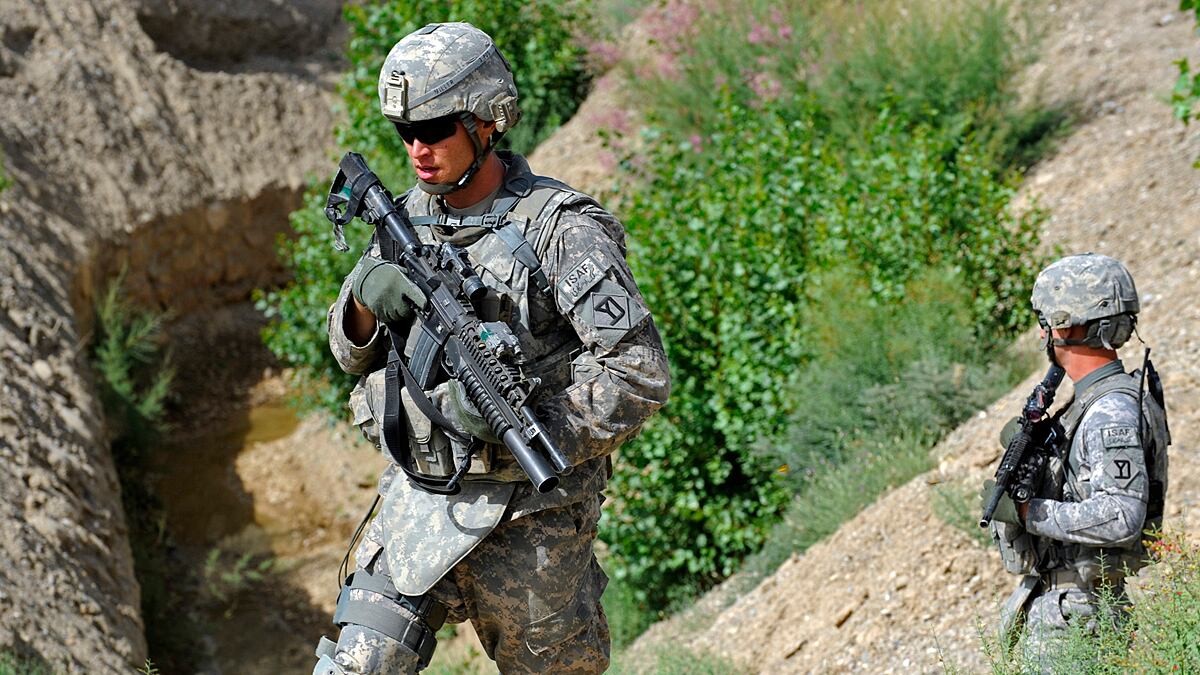Pentagon officials prepared for President Barack Obama to announce Wednesday that as many as 10,000 troops will be pulled from Afghanistan by year’s end, a move that would strike a middle ground between commanders who wanted to keep most of their current resources and lawmakers seeking steeper war savings.
White House and senior officials were tight-lipped Tuesday about the specific details of Obama’s announcement, but Defense officials told The Daily Beast they were anticipating a plan to reduce up to two brigades of 5,000 soldiers each this year.
One possibility is that one brigade will be pulled directly from Afghanistan and that a second planned for rotation into the country won’t be sent to achieve the savings, officials said.
The Daily Beast’s Leslie H. Gelb reported a week ago that Obama had already decided that all 30,000 troops added to the Afghan theater beginning in late 2009 as part of a surge to combat a growing insurgency would be withdrawn by the end of 2012. But the question that has lingered is how fast and how many this year.
The president has shown a propensity to split the difference among his inner circle of national security advisers. The 30,000 withdrawal figure was itself a compromise, and would still leave the U.S. at the end of 2012 with the largest military contingent inside Afghanistan at 70,000 troops.
Defense Secretary Robert Gates and Gen. David Petraeus, commander of coalition forces in Afghanistan, gave Obama a range of options. On a farewell tour of U.S. troops in Afghanistan earlier this month, Gates said repeatedly that any drawdown should initially be “modest."

Gates and Petraeus are believed to have favored a pullout this year of no more than 3,000-5,000 troops, with more to follow in 2012. But Defense officials told The Daily Beast that one of the options they had given to Obama did envisage doubling that initial drawdown.
Gates and Petraeus accepted that all 30,000 sent in the 2009 surge would be pulled out, the officials said, speaking only on condition of anonymity because they were describing wartime deliberations. The operational issue was: how quickly?
Gates’ main argument, which he laid out on several occasions to gatherings of U.S. troops in Afghanistan, was that the number announced for immediate departure would be less significant than the slope—in other words, speed—of the overall drawdown. Secretary of State Hillary Clinton is believed to have agreed that any drawdown should minimize its impact on coalition efforts in Afghanistan.
Obama’s political advisers, responding to increasing pressure from Capitol Hill, are believed to have argued for a swifter pullout. Cost was explicitly a factor in these White House discussions, a senior Pentagon official told The Daily Beast.
The expedition in Afghanistan will cost the U.S. taxpayer around $120 billion this year. On Monday, the annual meeting of the United States Conference of Mayors passed a resolution calling on the president to “speed up the ending” of U.S. military engagement in Iraq and Afghanistan, and “bring these war dollars home to meet vital human needs.”
After close to 10 years of war, the strategy of the U.S. and its allies in Afghanistan boils down to two gambles that will be reflected in whatever decision the president makes public.
The first is that the U.S. can build this summer on military and diplomatic gains made last year in Afghanistan. The plan is that U.S. soldiers and Marines will expand their sway over Helmand province and its capital Kandahar—the Taliban heartland that, at some cost, American forces occupied last year.
“Expanding the security bubble,” the deputy U.S. commander of coalition forces, Lt. Gen. David Rodriguez, calls this plan. In the east, meanwhile, U.S. forces will step up their efforts to intercept and kill the forces of the Taliban allies as they come in from the northern Waziristan province of Pakistan en route to cause mayhem in the Afghan capital, Kabul.
Gamble Two is longer term: to train and equip enough Afghans so they can take over the task of fighting the Taliban and preserving Afghan President Hamid Karzai and his government in Kabul when U.S. and other Western forces currently in Afghanistan pull out at the end of 2014.
Underlying gamble No. 1 is the hope that a second summer of setbacks for the Taliban in their Pashtun heartland will persuade enough of them to opt for negotiating a political settlement.
The death of Osama bin Laden may affect the Taliban’s thinking. Gates has repeatedly said he hopes it will. But so far, the commanders in Afghanistan report seeing no visible impact.
Underlying gamble No. 2 is the hope that Karzai’s government can somehow be buttressed to bring enough security and effective government to the war-torn provinces of southern Afghanistan that the locals will opt for Kabul’s loose-rein rule rather than the puritan overlordship of the Taliban.
Both plans need a lot of troops. Counterinsurgency of the sort the U.S. has embarked upon in Afghanistan needs three things in abundance: troops, money, and time. By affirming that coalition combat forces would pull out of Afghanistan in 2014, NATO handed the Taliban the advantage of time. Congress is now balking at the cost. That leaves troop numbers as a crucial issue.






